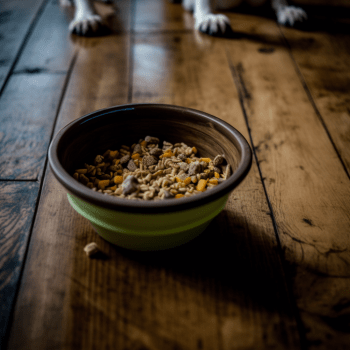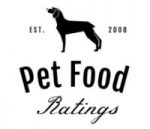How to Calculate Carbohydrates in Pet Food

Very few pet foods tell you how many carbohydrates they contain. Do you know why?
Usually if a pet food company doesn’t tell you something, or avoids telling you something, then they don’t want you to know.
Carbohydrates turn to sugars, and you already know the potential issues of too much sugar in the diet. We tend to feed our dogs and cats the same food every day, so it really matters how much of a pet food is carbs.
If you want to find out how many carbohydrates there are in your pet food, then there’s a simple way we can calculate it. It won’t give you an accurate answer as there are variations which make this impossible without a lab test, but it will give you an idea.
The first step in determining carbohydrate percentage is seeing if your pet food has a guaranteed analysis or a typical analysis:
Guaranteed Analysis vs Typical Analysis – Why it matters
All pet foods will have either a guaranteed analysis or typical analysis. The key word here is guaranteed, which is why better pet foods use a guaranteed analysis, and budget pet foods favor a typical analysis.
A guaranteed analysis will give you minimum percentages for what matters, namely protein and fat.
A typical analysis may contain less than you would hope.
For example, let’s consider a pet food with 20% protein and 10% fat:
- With a guaranteed analysis, you are assured the pet food contains at least 20% protein and 10% fat.
- With a typical analysis, it could mean 18% protein and 8% fat. Perhaps less. This will also likely mean more carbohydrates.
Seeing if your pet food has a guaranteed analysis is a good first step in determining if your pet food is any good. Be wary of a typical analysis on a dry dog food – you can make exceptions for raw or air/freeze dried foods though.
How to calculate carbohydrates in pet food
The following formula will give you a good estimate of carbohydrates in your pet food:
100 – Protein % – Fat % – Moisture % – Ash %
Moisture and Ash percentage are rarely listed on pet food labels either, but the average for dry food is 10% moisture and 8% fat.
On a complete and balanced pet food you should always find the protein and fat percentages.
Here’s an example for a pet food with 20% protein and 10% fat, using our averages for moisture and ash:
100 – 20 – 10 – 10 – 8
This gives us an estimated carbohydrate percentage of 52%, or approximately half of the product.
That’s actually a realistic figure for many pet foods, particularly dry dog foods. A decent dry dog food will have more protein (from meat), more fat, and less carbohydrates. A good dog food may have 30% carbohydrates or less.
Variations
I mentioned guaranteed analysis vs typical analysis earlier, and this can affect the estimated carbohydrates. Thankfully, with a guaranteed analysis this will likely be less carbs than the estimated figure. For a typical analysis it would likely be more carbs. Keep that in mind!
Some pet foods list moisture and ash to make this calculation more favorable. An example would be “Moisture 12% max”. Using this figure instead of our average 10% would suggest lower carbohydrates, but the reality is this is a “max” figure and may not represent the norm. The norm may be 8% moisture, which would result in higher carbohydrates using this formula.



